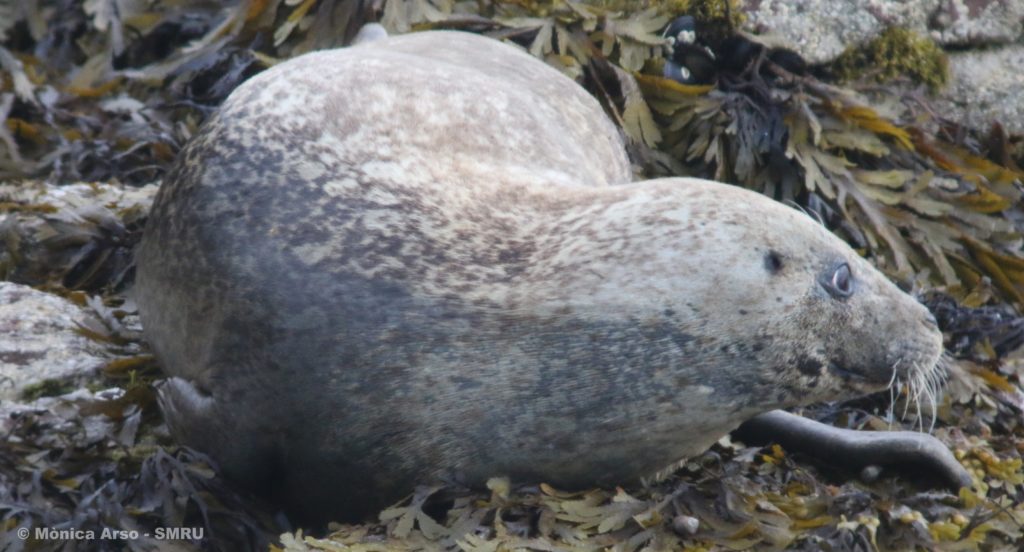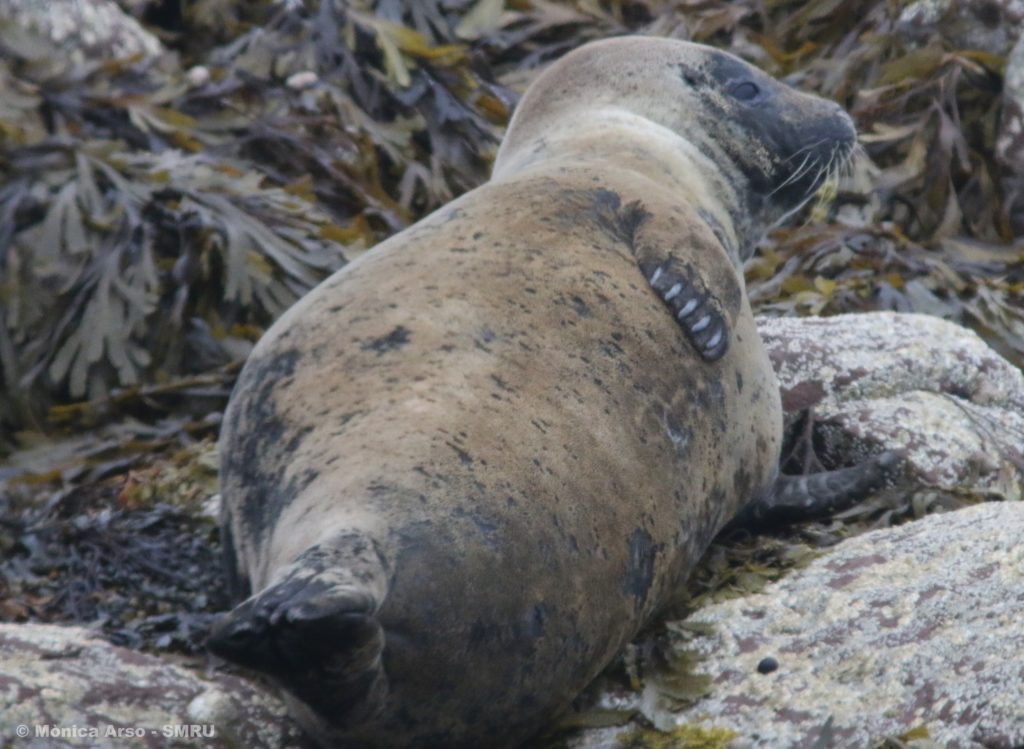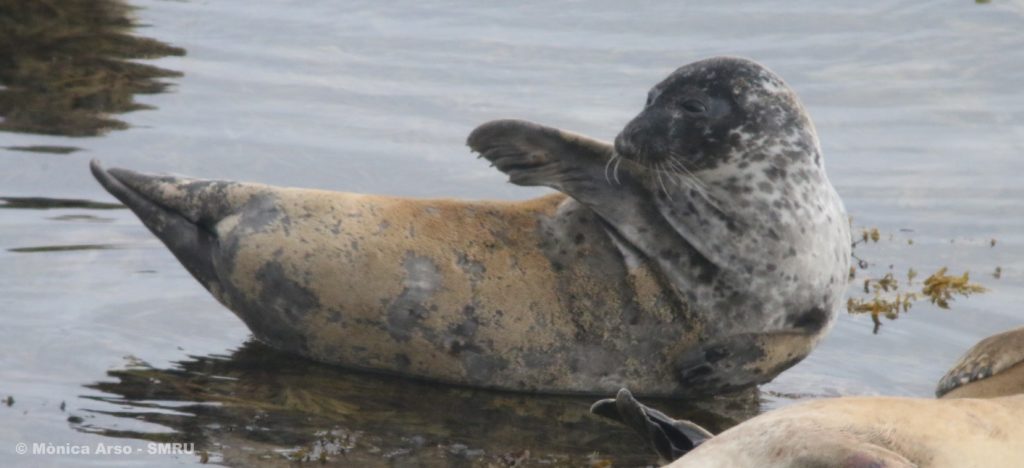Once again we are approaching the end of our photo-ID effort at the study sites. Following last year’s pattern, the mood at the haulout sites in Orkney has considerably changed over the last couple of weeks. Most of the pups have been weaned which means the females are free to go foraging before they start moulting.
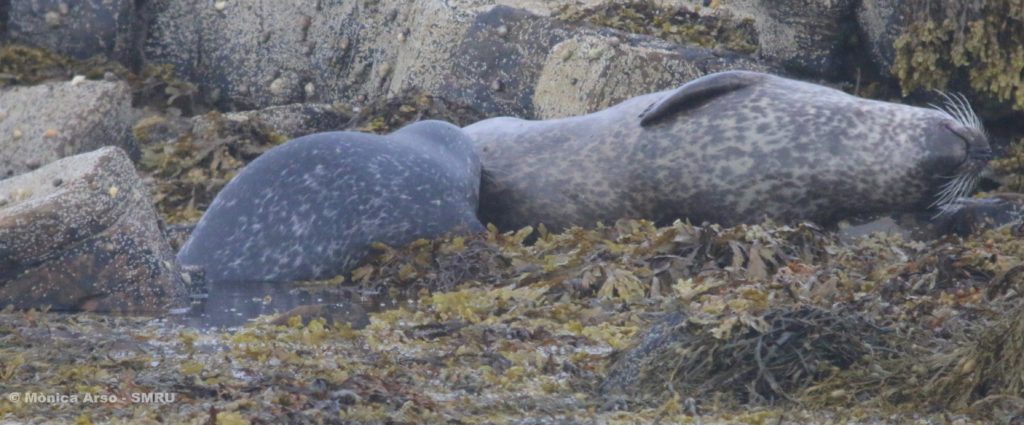
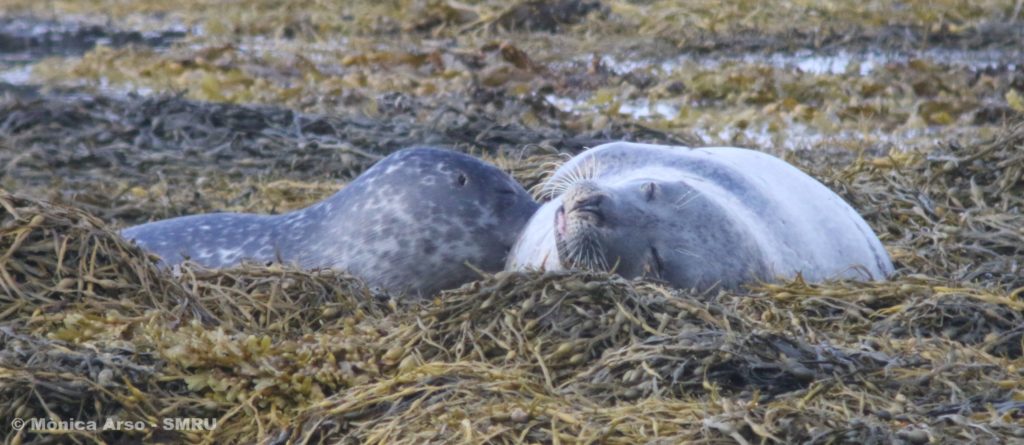
The haulout sites are now filled with the newly weaned pups, some of which are not quite over the fact that the good days of suckling the fat-rich milk are over. If the opportunity shows, they will try to get some extra feeds from the few females that are still suckling their pups. Despite their best efforts, they tend to get discouraged fairly quickly either by the females or by the pups holding the right to suckle. In the video below you can see a female coming to shore followed by three pups, two of which are just wanting that extra feed. However, they quickly realize that’s not going to happen and go back into the water.
On some occasions females seem to tolerate the presence of a second pup and might allow it to rest near by, but again, that doesn’t last long if the pup attempts to get too close. That’s exactly what seems to occur in the next video, also captured in Orkney. This female came onshore with two pups and started suckling one (assumed to be hers) while tolerating the presence of a second one of similar size. However she quickly snapped that pup to presumably stop it from approaching any further.
To better understand whether this phenomenon is down to just a few pups or is more widespread, we do try to get pictures of the pups as well as the adults. Because pups are born with their adult coat, they already have a characteristic and unique pelage pattern. By identifying pups we can attempt to estimate how long are pups seen in association with their mothers, how long does the lactation period last and whether pups will suckle from different females.
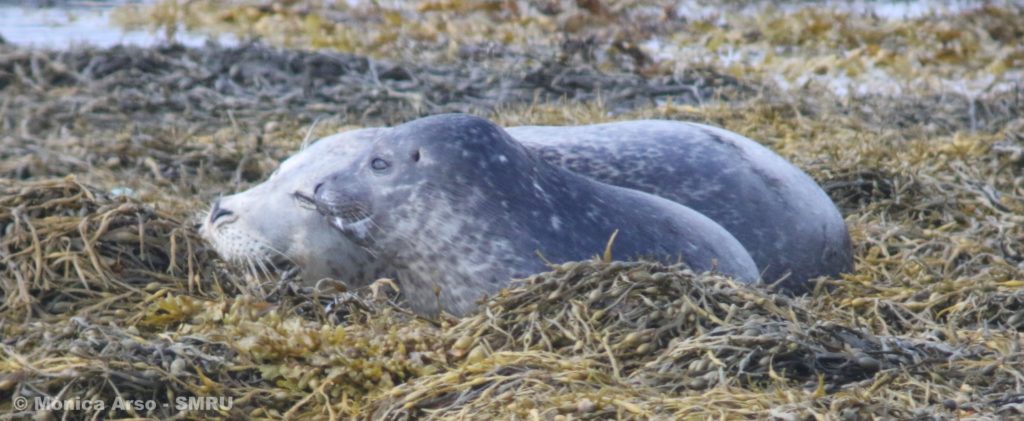

As pupping season comes to an end, preparations for mating and moult season are well underway. Some of the bigger males have been seen more regularly at the haulout sites in Orkney and have offered all kinds of displays. These go from simple grunting exchanges with other males in the distance, to fast swimming along the haulout sites, throwing seaweed around, as well as proper physical fights. In the next video we captured two harbour seal males fighting; the younger one (smaller) had been warming up by doing the seaweed throwing as well as grunting, and got even crossed with an unfortunate pup that was at the wrong place at the wrong time. Luckily it was all just a big scare and the pup managed to haulout and recover from the unwanted fight. However, the young male kept on challenging a much bigger male, until they started to fight. After a resting period, they both took it back into the water, where full body flips and jumps were seen from the distance. After that, they both rested on land, like nothing had happened.
While the adult males are busy maintaining territories and fighting with other males, some of the younger seals are well into their annual moult, while other adults are just starting it off. The first seals to moult are those with the oldest coat, which will be the pups born last year, as well as the very young seals that also moulted early last year. The old hair is brown and in patches, but the new coat showing underneath displays gorgeous and distinctive black and white patterns. The moult period is an itchy one, and seals can be seen scratching themselves as the old coat gets slowly replaced by the new one. Is in this time of the year when seals spend a higher proportion of time hauled out onshore rather than in the water. The moult is an expensive period in terms of energy, as warm blood is circulated very close to the skin to help the new hair grow quickly. To avoid losing energy by getting cold in the water, seals spent much more time onshore.
